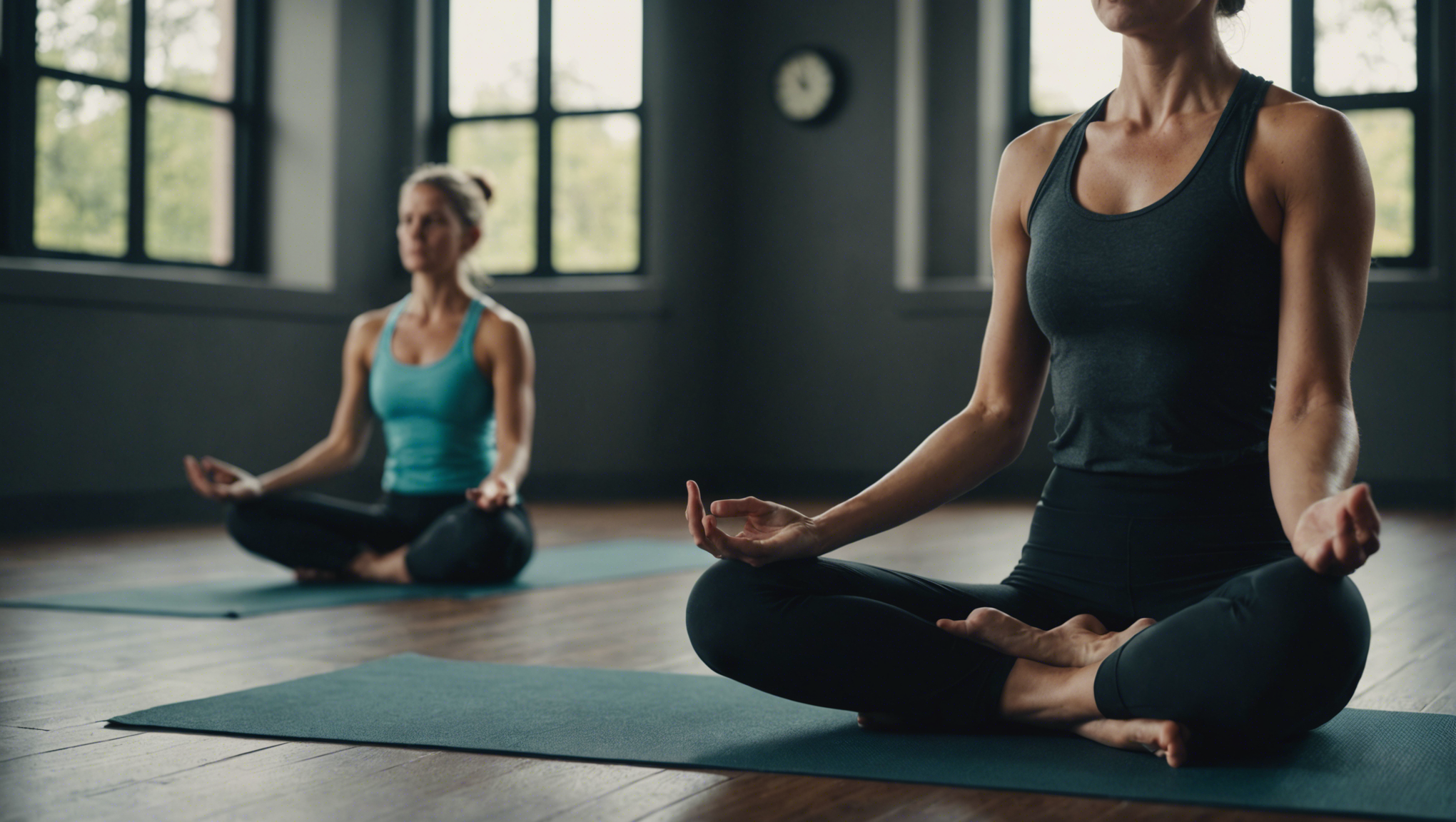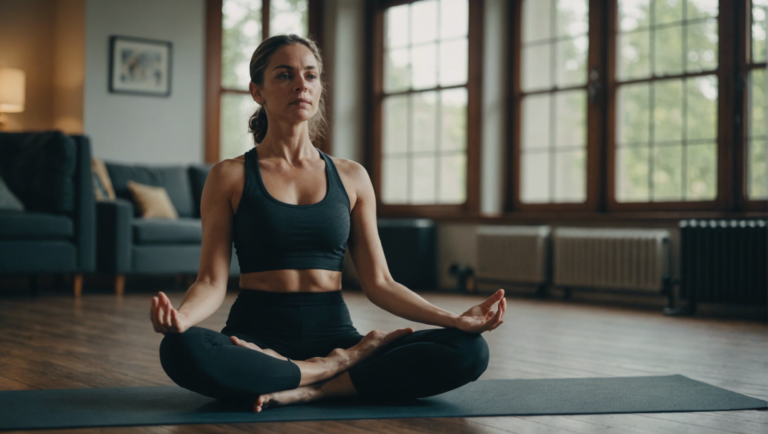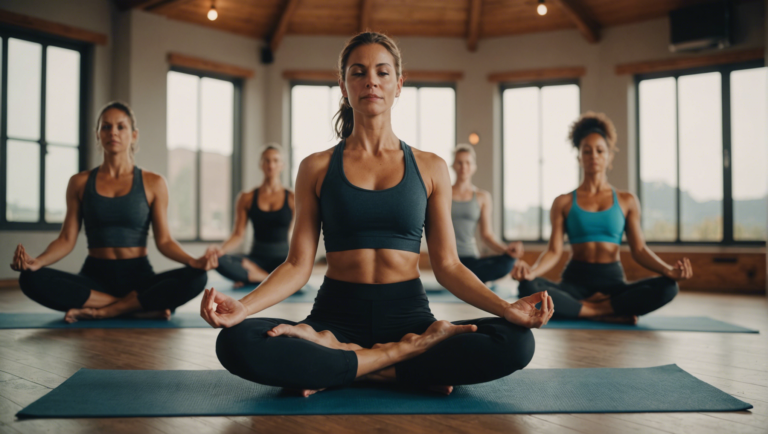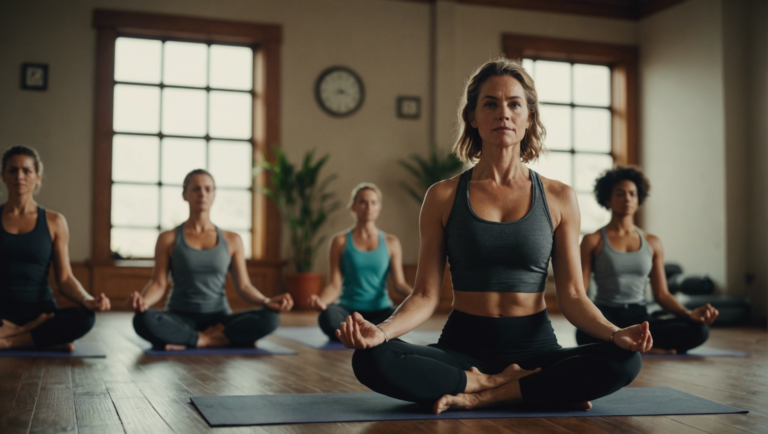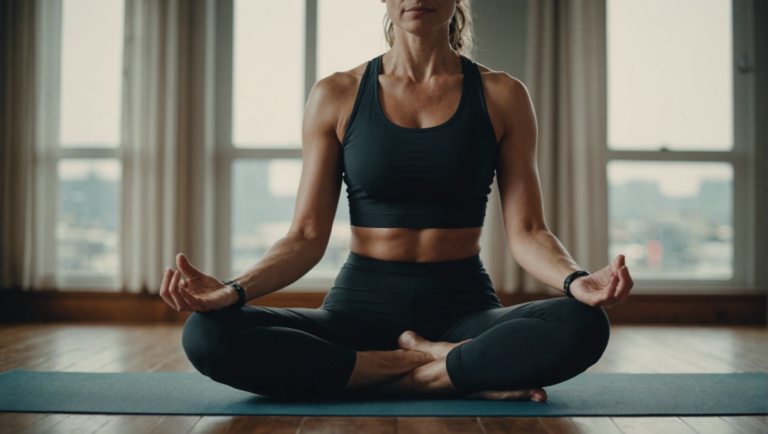Optimal Duration For Everyday Yoga Practice: How Long Should You Do It?
Determining the Optimal Duration for Everyday Yoga Practice
How Long Should Your Daily Yoga Practice Last?
Embarking on a yoga journey introduces a plethora of benefits, ranging from improved flexibility and strength to enhanced mental clarity and stress reduction. However, one question often arises: What is the ideal duration for a daily yoga practice? The answer is not one-size-fits-all, as it depends on various factors including your experience level, lifestyle, and personal goals. This comprehensive exploration seeks to guide you towards finding your perfect yoga practice length.
Tailoring Your Practice to Fit Your Lifestyle
The beauty of yoga lies in its adaptability to fit into any lifestyle. Busy professionals might find solace in short, 15-minute sessions to recharge during a lunch break, while individuals with more flexible schedules could benefit from longer sessions of an hour or more. The key is consistency. Even a brief daily practice is preferable to sporadic longer sessions as it nurtures a sustainable habit, integrating the discipline seamlessly into your life.
Understanding the Impact of Different Yoga Styles
Yoga encompasses a wide range of styles, from the invigorating sequences of Vinyasa to the restorative calmness of Yin. Each style dictates the potential duration of a session. For instance, a dynamic Ashtanga practice may be sustainably kept to a shorter duration due to its intensity, whereas Hatha or Iyengar practices, focusing on alignment and slower movements, lend themselves to longer durations. Start by exploring different styles to understand which resonates with your physical and mental needs the most.
Listening to Your Body: The Ultimate Yoga Timer
Amidst schedules and recommended practice lengths, the most crucial advice is to listen to your body. It’s your best guide to determining how long you should spend on the mat. Some days you might feel energized and capable of a longer, more intensive practice. On other days, a gentle fifteen-minute session of mindful breathing and a few restorative poses could be all your body needs to feel balanced and rejuvenated. The goal of yoga is to unite body, mind, and spirit, not adhere to a strict timer.
Balancing Quality Over Quantity
In yoga, the quality of your practice outweighs the quantity. A focused, mindful 20-minute session where you are fully present can be more beneficial than an hour of distracted, mechanical movements. This approach encourages a deeper connection with the practice, promoting greater benefits both physically and mentally. Aim for depth rather than duration, focusing on the integrity of each pose and the mindfulness of your breath.
Setting Realistic Goals and Expectations
As you embark on this journey, set realistic goals and expectations. If you’re new to yoga, starting with shorter sessions will help you build a foundation without feeling overwhelmed. Gradually, as your strength and flexibility improve, you can extend your practice duration. Remember, yoga is a personal journey. What works for one individual may not work for another. The goal is personal growth, not competition.
Integrating Yoga into Daily Routine
Integrating yoga into your everyday life goes beyond scheduled practice times. It encompasses mindfulness in how you move, breathe, and approach your day-to-day activities. This holistic integration can transform short daily practices into a continuous flow of yoga consciousness, extending the benefits throughout your day.
Final Thoughts on Finding Your Optimum Practice Length
Discovering the optimal duration for your daily yoga practice is a personal exploration that evolves with your lifestyle, goals, and physical condition. Whether it’s a brief session to start the day or a longer, introspective practice to refine your skills, the essence lies in maintaining a consistent practice that nurtures your well-being. Embrace the journey with openness, and let your internal wisdom guide you to the practice length that resonates with your essence.
The Impact of Daily Practice Duration on Physical and Mental Health
Optimal Duration for Everyday Yoga Practice: How Long Should You Do It?
Determining the optimal duration for everyday yoga practice hinges on a complex interplay of factors including personal goals, schedule constraints, and individual physical condition. Rather than prescribing a one-size-fits-all approach, experts suggest a more nuanced examination of practice durations that resonate with holistic health benefits. This discussion seeks to unravel the intricacies of daily yoga practice duration, guided by scientific insights and traditional wisdom, to foster both physical and mental health.
Unpacking the Layers of Yoga Practice
Yoga, an ancient discipline, extends beyond physical exercise, enriching the practitioner’s mental and emotional realms. The duration of practice can significantly influence these benefits, prompting a closer look at how long individuals should engage in yoga daily.
The Physical Health Paradigm
Evidence suggests that even short durations of yoga can impart substantial physical health benefits. Starting from as little as 15 minutes a day, practitioners can experience improved flexibility, a boost in cardiovascular health, and enhanced muscular strength. However, extending practice to 30 minutes or beyond may amplify these benefits, particularly in areas such as weight loss and overall physical fitness.
Mental and Emotional Wellness
The mental and emotional benefits of yoga are arguably as significant as the physical ones. Yoga practices, especially those incorporating mindfulness and meditation, can lead to reduced stress levels, better emotional balance, and heightened mental clarity. The duration of yoga practice plays a crucial role here, with longer sessions (30 minutes to an hour) potentially offering deeper mental health benefits due to prolonged engagement in mindfulness exercises.
Balancing Duration with Intensity
An essential consideration in establishing a yoga routine is the interplay between duration and intensity. Intensive practices may necessitate shorter durations to avoid physical strain or mental burnout, whereas gentler routines might allow for longer sessions. Listening to one’s body and adjusting accordingly is paramount to deriving the maximal benefit from yoga without adverse effects.
Personalization: Key to Optimal Duration
Acknowledging individual differences underscores the importance of personalizing practice duration. Factors such as lifestyle, physical condition, and personal objectives (e.g., stress reduction, fitness improvement) should inform the duration of daily yoga practice. For some, brief daily sessions may suffice, while for others, longer periods may be more beneficial or desirable.
Scientific Insights and Yogic Traditions
Integrating scientific research with yogic tradition offers a comprehensive perspective on optimal practice durations. Traditional yoga scriptures do not strictly quantify practice time; instead, they emphasize regularity, dedication, and the mindful execution of poses and breathing exercises. Modern scientific studies corroborate the benefits of regular practice, suggesting that consistency over time, rather than session length, is pivotal for accruing yoga’s holistic benefits.
: A Dynamic, Individualized Approach
While the optimal duration for everyday yoga practice varies widely among individuals, starting with manageable sessions and gradually adjusting based on personal experience and goals is advisable. Regular, mindful practice, even if for shorter periods, tends to yield significant physical and mental health benefits. Ultimately, the journey of yoga is profoundly personal, with its richest rewards often found in the nuanced exploration of one’s abilities and aspirations.
Yoga’s essence lies in its adaptability and personal relevance, making the question of optimal daily practice duration a deeply individual one. Engaging with yoga as a continuous, evolving practice opens pathways to comprehensive well-being, anchored not merely in the minutes spent on the mat but in the integration of its principles into the fabric of daily life.
Customizing Your Yoga Routine: Factors to Consider
Embarking on a yoga journey can be both exhilarating and intimidating. While the practice of yoga is ancient and deeply rooted in tradition, its application in today’s fast-paced world is as dynamic and diverse as the practitioners themselves. Tailoring a yoga routine to fit your unique lifestyle, goals, and physical condition is an essential step toward achieving harmony and balance, both on and off the mat. Here, we delve into the critical factors to consider when customizing your yoga practice.
Understanding Your Body’s Needs
The cornerstone of a meaningful yoga practice is an acute awareness of your body’s strengths, limitations, and areas requiring extra attention. Recognizing any chronic conditions, injuries, or physical challenges is crucial in selecting yoga styles and poses (asanas) that will nourish rather than strain your body. This understanding not only prevents potential harm but also ensures a progression that is both safe and enriching.
Aligning with Your Goals
Whether you aim to enhance flexibility, build strength, reduce stress, or seek spiritual growth, your objectives play a pivotal role in shaping your yoga practice. Articulating clear, realistic goals can guide the selection of appropriate yoga styles. For instance, Vinyasa or Ashtanga might appeal to those looking for a more dynamic, physically challenging practice, whereas Hatha or Yin could be better suited for individuals focusing on relaxation and mindfulness.
Balancing Yoga with Lifestyle
Integrating yoga into your daily routine necessitates a pragmatic assessment of your schedule, commitments, and time constraints. A practice that becomes a source of stress, due to unrealistic time demands, defeats the essence of yoga. Strive for balance by setting a feasible routine, whether it’s a longer session a few times a week or short daily practices. This approach ensures consistency, which is key to experiencing the profound benefits of yoga.
Recognizing the Power of Variability
Variability into your practice keeps both the mind and body engaged, promotes a well-rounded physical condition, and prevents the stagnation that may arise from repeating the same sequence of poses. Experimenting with different styles, attending workshops, or practicing under various instructors can introduce new perspectives and techniques, enriching your yoga journey.
Listening to Intuition and Feedback
Despite the abundance of external guidance from instructors, books, and digital content, the most profound insights often come from within. Pay close attention to how you feel during and after practice. If certain poses or sequences consistently cause discomfort or dissatisfaction, it might be time to adapt your practice. This intuitive approach ensures your yoga journey remains deeply personal and genuinely fulfilling.
Engaging with the Yoga Community
Yoga is not just a series of physical poses but a comprehensive philosophy that encompasses mental and spiritual well-being. Engaging with the broader yoga community, whether through online platforms, local studios, or specialized groups, can offer support, inspiration, and a sense of belonging. This connection enhances the individual practice by providing new insights, motivation, and collective energy.
Adapting to Life’s Changes
As we journey through life, our bodies, minds, and circumstances evolve. A flexible yoga practice—one that adapts to these changes—is vital for sustained engagement. Periodically reassess your goals, physical condition, and schedule to ensure your practice remains relevant and supportive. Such adaptability not only reflects the true spirit of yoga but also contributes to a lifelong practice that evolves alongside you.
Embarking on a personalized yoga journey is an act of self-care and introspection. By carefully considering your body’s needs, goals, lifestyle, and the inevitable fluctuations of life, you can craft a yoga practice that is uniquely your own. This customized approach not only maximizes the benefits of yoga but also fosters a deeper connection to the practice, encouraging consistency, growth, and a profound sense of well-being.
The Role of Intensity and Style in Defining Practice Length
Yoga, an ancient practice rooted in over 5,000 years of Indian tradition, is praised not just for its physical benefits but also for its profound impact on mental health. Today, as yoga’s popularity continues to soar across the globe, practitioners often find themselves pondering over the length of their sessions, specifically how intensity and style play pivotal roles in determining the ideal duration of their practice. This exploration not only enhances the effectiveness of a routine but also personalizes the experience, catering to individual needs and goals.
Understanding the Spectrum of Yoga Intensity
Yoga encompasses a wide spectrum of styles, each varying in intensity and purpose. On one end, there are gentle, restorative practices like Yin Yoga, which focus on relaxation and deep tissue stretching, necessitating longer durations to effectively soften into the poses, often taking 45 minutes to an hour per session. Conversely, high-intensity styles such as Vinyasa or Ashtanga Yoga emphasize strength, flexibility, and stamina, with a dynamic flow of postures that can yield considerable benefits even in shorter durations, typically ranging from 30 minutes to an hour.
The intensity of a yoga practice significantly influences its optimal duration. High-intensity sessions can be both physically and mentally demanding, hence shorter practices may prevent overexertion and promote consistency over time. Meanwhile, low-intensity styles, which are gentler on the body, allow for longer durations, enabling a deeper dive into mindfulness and relaxation.
Aligning Practice Length with Yoga Style
Selecting the right yoga style is crucial for defining the length of practice best suited to personal wellness goals. For those seeking stress reduction and mental clarity, practices like Hatha or Yin Yoga, known for their slower pace, can be incredibly beneficial when practiced for longer durations. This allows individuals to fully engage with each posture, enhancing mindfulness and the mind-body connection.
For practitioners with fitness-oriented goals, such as improving cardiovascular health or building muscular strength, styles like Power Yoga or Ashtanga offer a vigorous workout that can be effectively packed into a shorter, more intense session. These practices not only cater to physical endurance but also to those with time constraints, proving that even brief, daily yoga sessions can contribute to significant health benefits.
Balancing Duration with Daily Life
Integrating yoga into daily life calls for a realistic approach to scheduling practices. It’s essential to factor in personal commitments and lifestyle when determining the length of yoga sessions. A common misconception is that only lengthy practices yield results; however, consistency is key. Even ten to twenty minutes of daily yoga can foster improvement in flexibility, strength, and mental well-being. The aim should be to create a balanced routine that is both beneficial and sustainable in the long run.
For those leading busy lives, it’s worth exploring the concept of ‘Yoga Snacking’ – interspersing short, focused practices throughout the day. This approach allows individuals to experience the benefits of yoga without the pressure of carving out large blocks of time, demonstrating that when it comes to yoga, quality often outweighs quantity.
Listening to One’s Body and Mind
Ultimately, the most effective yoga practice is one that listens to the body and mind, adapting not only to the physical and emotional needs of the day but also to the evolving journey of the practitioner. Flexibility in practice duration and style allows individuals to explore what best serves them, encouraging a deeper connection with self and the discipline of yoga.
Adopting a mindful approach to yoga practice, where one is attuned to the body’s cues and emotional state, can guide practitioners toward the most fulfilling and appropriate session length. Whether it’s a brief, invigorating morning routine or a lengthy evening session for unwinding, being in tune with oneself ensures that each practice is maximally beneficial.
Defining the optimal duration for everyday yoga practice hinges on a harmonious balance between the style’s intensity and one’s personal wellness objectives, lifestyle, and capacity for physical and mental engagement. By navigating these considerations with mindfulness and flexibility, practitioners can craft a yoga routine that not only fits seamlessly into their daily life but also profoundly enhances their overall well-being.
Balancing Yoga with Life’s Demands: Practical Advice for Consistency
Yoga, an ancient practice that marries the body, mind, and spirit, has found a modern sanctuary in the lives of many seeking solace from the whirlwind of daily demands. Balancing this profound practice with the multifaceted aspects of life can be a conundrum, especially when calendars overflow and commitments loom large. This guide offers practical advice to seamlessly weave the threads of yoga into the rich tapestry of day-to-day life, fostering consistency in your practice amidst life’s flurry.
Crafting a Yoga Routine Around Work
In the hustle of professional responsibilities, finding moments for yoga might seem like a herculean task. Yet, the key to integrating yoga into a work-centric schedule lies in the art of adaptability. Opt for short, focused sequences that can be performed during breaks or shortly before the workday begins. Early morning practices ignite energy levels, setting a vibrant tone for the day. Conversely, evening sessions can serve as a bridge to unwind, releasing the tensions accumulated throughout the day. Embracing yoga as a flexible practice, rather than a time-consuming commitment, allows for a harmonious blend with work life.
Aligning Yoga with Family Time
Family, an integral facet of life, demands time, attention, and energy. However, rather than viewing yoga and family obligations as competing interests, consider them complementary. Engaging in family-friendly yoga sessions not only fosters personal well-being but also encourages a shared experience of relaxation and mindfulness. Weekend mornings or evenings when the household gathers can transform into communal yoga times, embedding the practice into the collective rhythm of family life. This approach not only ensures consistency in your yoga practice but also enriches family bonds through shared wellness activities.
Leveraging Technology for Consistency
In the digital age, technology emerges as a formidable ally in maintaining a consistent yoga practice. Numerous apps and online platforms offer guided sessions ranging from brief to extended durations, catering to varied schedules and preferences. These digital resources empower practitioners to sustain their practice whether at home, work, or in transit. Setting reminders or scheduling virtual yoga sessions with friends can also enhance accountability, turning yoga practice into a non-negotiable fixture in your daily routine.
Embracing Yoga in Unexpected Moments
The beauty of yoga lies in its intrinsic adaptability to various settings and times. Identifying unexpected moments and spaces for yoga can significantly amplify its presence in your life. Simple stretches or mindful breathing exercises during moments of waiting or in-between tasks can infuse yoga into the crevices of a busy day. Viewing yoga not merely as a scheduled activity but as a portable practice that can unfold anywhere sets the stage for a deeply rooted, consistent yoga journey.
Nurturing a Mindset for Flexibility and Grace
Central to the endeavor of balancing yoga with life’s demands is the cultivation of a mindset anchored in flexibility and grace. Acknowledge that some days will be more conducive to extensive practice than others, and that’s perfectly fine. The essence of yoga transcends physical postures, embedding itself in the way we breathe, move, and interact with our surroundings throughout the day. By embracing a perspective that values consistency over perfection, practitioners can navigate the ebbs and flows of life with yoga as a steadfast companion.
In essence, the confluence of yoga with the demands of daily life is not only feasible but enriching. It imparts a serene rhythm to the cacophony of responsibilities, instilling a sense of calm and resilience. Through strategic adjustments, leveraging technology, and nurturing a flexible mindset, yoga can flourish as a consistent, enriching presence in your life, bringing balance, tranquility, and heightened awareness to the everyday. As you navigate the path of integrating yoga into the fabric of your daily existence, remember that the journey itself is as rewarding as the practice.
Conclusion
Embarking on the journey of yoga requires not just a commitment to practicing regularly, but also an understanding of how to adapt this ancient discipline to meet modern needs and lifestyles. As explored in our discussion, determining the optimal duration for everyday yoga practice is not about setting a rigid timetable; instead, it’s about creating a flexible schedule that aligns with both your personal goals and the realities of your daily life. By considering factors such as the impact of daily practice duration on physical and mental health, the importance of customizing your yoga routine, the role of intensity and style in defining practice length, and the necessity of balancing yoga with life’s demands, we equip ourselves with the tools needed for a fulfilling and sustainable yoga practice.
The correlation between the duration of daily yoga practice and its effects on physical and mental health cannot be overstated. Regular engagement with yoga has been shown to offer a plethora of benefits, from improved strength and flexibility to enhanced mental clarity and stress reduction. However, these benefits are most pronounced when the practice is adjusted to suit individual needs and capacities. This is why an awareness of one’s physical condition, stress levels, and personal objectives is crucial in determining how long each session should last.
Customizing your yoga routine takes this a step further by emphasizing the importance of listening to your body and recognizing that the ideal practice length can vary from day to day. Factors such as current physical health, energy levels, and even the specific goals for each session (be it relaxation, strength building, or flexibility improvement) should guide the duration of practice. This approach not only prevents injuries but also ensures that each session is as effective and enjoyable as possible.
The role of intensity and style in defining practice length is another vital consideration. Different styles of yoga offer varied levels of intensity, from the gentle flows of Hatha yoga to the more physically demanding sequences of Ashtanga or Power yoga. Understanding these differences allows practitioners to make informed decisions about how long they should engage in each session to meet their fitness or wellness goals. For instance, a shorter, more intense practice may be more beneficial for some, while others may find longer sessions of less intense styles more suitable for their needs.
Balancing yoga with life’s demands offers perhaps the most practical advice for consistency in practice. The reality is that dedicating time to yoga in today’s fast-paced world can often seem like a challenge. However, by viewing yoga not as another task on our to-do list but as a necessary component of our well-being, it becomes easier to integrate into our daily routine. Whether it’s a few minutes of meditation in the morning, a quick midday stretch, or a longer session to unwind in the evening, every bit counts towards maintaining balance and fostering a sense of inner peace.
Ultimately, the essence of a rewarding yoga practice lies in its adaptability and the personal connection one develops with it over time. It’s about finding harmony between the body’s needs and the mind’s aspirations, recognizing that this balance is not static but evolves along with us. As we continue to navigate our individual paths through the practice of yoga, let us remember that the journey itself is as important as the destination. By staying mindful of our needs, remaining flexible in our approach, and maintaining a consistent practice, we set the stage not just for improved physical and mental well-being but for a richer, more integrated experience of life itself.
